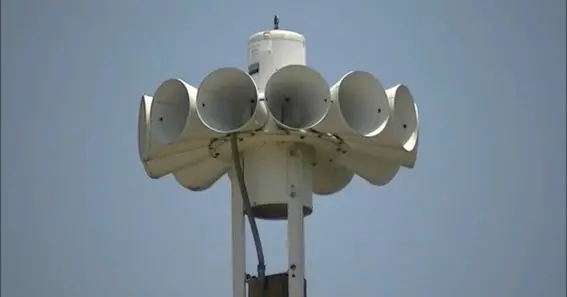When was the STL-10 siren built? The STL-10, produced by Federal Signal (formerly Federal Electric/Federal Enterprises), first appeared on the market in the mid-1950s as part of America’s growing civil defense infrastructure. Alongside related models like the STH-10, the STL-10 was developed to provide a powerful, far-reaching signal for communities to warn residents of air raids, severe weather, and other emergencies. Over the decades, this iconic electromechanical siren has earned a dedicated following among siren enthusiasts and continues to be referenced for its robust design and loud, single-tone roar.
Early Development and Civil Defense Roots
- Mid-1950s Introduction
- The Federal Signal Company introduced several civil defense sirens during the early to mid-1950s in response to heightened Cold War concerns.
- The STL-10 emerged as a single-tone variant (hence the “L” in its designation, typically meaning “low tone” or “single-tone”) designed to cover large outdoor areas.
- Design and Specifications
- Horsepower & Motor: Known to house a substantial motor—often around 7.5 to 10 HP—capable of producing up to 125 dB or more at 100 feet.
- Housing and Shape: Characterized by a “projector” style with multiple horns arranged in a circle, maximizing sound dispersion.
- Outdoor Use: Designed predominantly for use atop poles or buildings, offering a 360° broadcast of its powerful alert tone.
- Role in Emergency Preparedness
- Throughout the 1950s and 1960s, these sirens were critical for tornado warnings, industrial site alarms, and civil defense drills.
- Communities often conducted weekly or monthly tests to ensure proper function, helping to familiarize residents with their distinctive, far-reaching wails.
When Was the STL-10 Siren Built?
Reiterating our focus keyword here: When was the STL-10 siren built? References from siren enthusiast communities, historical civil defense records, and various manufacturer catalogs place its initial release in the mid-1950s. While exact documentation on the very first unit can be scarce, it is generally accepted that the STL-10 was one of Federal Signal’s mid-century offerings—alongside models like the STH-10—to bolster America’s civil defense capabilities.
Reasons for Ongoing Popularity
- Vintage Appeal: Siren collectors and restorers prize the STL-10 for its historical significance and unique design.
- Durable Construction: Many of these mid-century mechanical sirens remain in operation decades after installation, a testament to their rugged engineering.
- Cultural Impact: Their haunting sound and recognizable silhouette frequently appear in documentaries, historical references, and pop-culture representations of classic “air raid” sirens.
- Enthusiast Community: A dedicated network of hobbyists continues to document, photograph, and preserve the legacy of antique sirens like the STL-10, sharing knowledge across forums and social media.
FAQs
- Who manufactured the STL-10 siren?
Federal Signal (previously known as Federal Electric or Federal Enterprises) produced it, building on its experience with civil defense and emergency sirens. - How does the STL-10 differ from the STH-10?
Both are electromechanical sirens with similar external shapes. The STL-10 is typically a single-tone model, whereas the STH-10 is often dual-tone. - Are STL-10 sirens still in use today?
Yes. Some communities continue to use or maintain them, though many have transitioned to newer electronic systems. Enthusiasts frequently restore retired units. - What does “STL” stand for?
While not officially confirmed in every manual, it generally denotes Siren, Ten-horsepower (or Ten-port), and Low (or single) tone. - How loud is an STL-10 siren?
Under optimal conditions, it can produce sound levels of approximately 125 dB at 100 feet—easily covering a radius of 1–1.5 miles in clear terrain.
The STL-10 remains an iconic piece of civil defense history. Even if modern technology has overshadowed these powerful electromechanical units, their imposing presence and unmistakable wail remind us of an era when robust air-raid or weather-warning sirens dotted the American landscape to keep communities safe.










